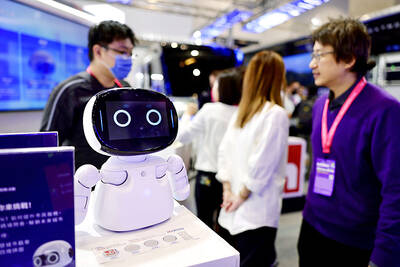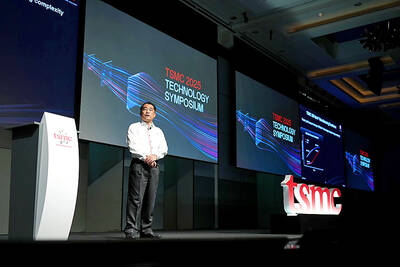Microsoft Corp was set to announce a new version of its software to run handheld organizers yesterday, updating a product that has taken sales from market leader Palm Inc in the last year.
The Microsoft Pocket PC 2002 operating system will go on sale on Oct. 4 in new handheld devices from Hewlett-Packard Co. Other companies using Microsoft software, such as Compaq Computer Corp, Toshiba Corp and Casio Computer Co will also produce devices with it, along with some new partners, said Microsoft Vice President Ben Waldman, who declined to specify.
When Microsoft released its Pocket PC operating system in April 2000, its software was used in only a few percent of organizers sold, while Palm had nearly 80 percent of the market.
Microsoft's share is now in high teens on the strength of its appeal to corporate users, while Palm has dropped to the high 60s, according to estimates from market research firm IDC.
``We are at the point where the enterprise is really the battleground, and it's clear the Pocket PC has the advantage there,'' said IDC Analyst Alex Slawsby.
Pocket PC 2002 has the potential to help Microsoft take further market share from Palm, Slawsby said, because its adds features that appeal to corporate customers. Microsoft and its partners are trying to appeal to companies to equip their employees with Pocket PCs.
New features designed for corporate customers include password protection and the ability to forge a secure connection over the Internet to corporate networks, programs and files. The product can wirelessly exchange address book contacts with Palm handhelds.
Still the product, which will be introduced by Microsoft CEO Steve Ballmer at a press events in London and San Francisco on Oct. 4, enters the market as both consumers and businesses are spending less. Slawsby said he expects the product to sell well, but that initial uptake would have been better in a stronger economy.
``I don't think you will see too many companies ditch year- old devices to buy these,'' he said.
IDC projects that by 2005, Palm and Microsoft each will have the same share of the market for software to run handheld devices, with about 40 percent each of the worldwide market and 45 percent each in the US.
Hewlett-Packard, maker of the Jornada organizer that runs on Microsoft's software, is set to announce two new models for sale on Oct. 4. The new models will cost US$599 and US$649 for a model with more memory. Both will offer US$50 rebates.
The new models feature a brighter screen, longer battery life, and interchangeable batteries so users won't have to wait for one to recharge. The new devices are slimmer and three ounces lighter, said Shauna Beatty, North American product manager for Jornada.
The new Jornadas will use Intel Corp's StrongArm processor exclusively, Intel spokesman Bill Calder said. Hewlett-Packard uses both Intel and Hitachi Ltd chips in current models. Intel and Hewlett-Packard will also work together on new wireless programs based on Intel chips, including bringing voice to upcoming Hewlett-Packard handhelds, Calder said.
Compaq meanwhile, will provide a free upgrade to the new software for customers who purchase its iPaq with the older software between tomorrow and Nov 30. Other iPaq users can purchase an upgrade for US$29.95 plus shipping and handling. Compaq will begin shipping iPaqs with the new software after it's released, said spokeswoman Nora Hahn.
The Pocket PC 2002 software also features new graphics and customizable backgrounds, instant messaging software, an improved player for audio and video files, as well as handwriting recognition software and a notification program that causes bubbles to pop up with indications about new e-mail messages and appointments.
The operating system also improves the level of security support for electronic books, fixing a problem that prevented Pocket PC users from reading many books, the company said.
Microsoft will demonstrate the software tomorrow at the Demomobile mobile and wireless technology conference in La Jolla, California.

DEMOGRAPHICS: Robotics is the most promising answer to looming labor woes, the long-term care system and national contingency response, an official said Taiwan is to launch a five-year plan to boost the robotics industry in a bid to address labor shortages stemming from a declining and aging population, the Executive Yuan said yesterday. The government approved the initiative, dubbed the Smart Robotics Industry Promotion Plan, via executive order, senior officials told a post-Cabinet meeting news conference in Taipei. Taiwan’s population decline would strain the economy and the nation’s ability to care for vulnerable and elderly people, said Peter Hong (洪樂文), who heads the National Science and Technology Council’s (NSTC) Department of Engineering and Technologies. Projections show that the proportion of Taiwanese 65 or older would

Nvidia Corp yesterday unveiled its new high-speed interconnect technology, NVLink Fusion, with Taiwanese application-specific IC (ASIC) designers Alchip Technologies Ltd (世芯) and MediaTek Inc (聯發科) among the first to adopt the technology to help build semi-custom artificial intelligence (AI) infrastructure for hyperscalers. Nvidia has opened its technology to outside users, as hyperscalers and cloud service providers are building their own cost-effective AI chips, or accelerators, used in AI servers by leveraging ASIC firms’ designing capabilities to reduce their dependence on Nvidia. Previously, NVLink technology was only available for Nvidia’s own AI platform. “NVLink Fusion opens Nvidia’s AI platform and rich ecosystem for

Taiwan Semiconductor Manufacturing Co (TSMC, 台積電) yesterday said it is building nine new advanced wafer manufacturing and packaging factories this year, accelerating its expansion amid strong demand for high-performance computing (HPC) and artificial intelligence (AI) applications. The chipmaker built on average five factories per year from 2021 to last year and three from 2017 to 2020, TSMC vice president of advanced technology and mask engineering T.S. Chang (張宗生) said at the company’s annual technology symposium in Hsinchu City. “We are quickening our pace even faster in 2025. We plan to build nine new factories, including eight wafer fabrication plants and one advanced

‘WORLD’S LOSS’: Taiwan’s exclusion robs the world of the benefits it could get from one of the foremost practitioners of disease prevention and public health, Minister Chiu said Taiwan should be allowed to join the World Health Assembly (WHA) as an irreplaceable contributor to global health and disease prevention efforts, Minister of Foreign Affairs Lin Chia-lung (林佳龍) said yesterday. He made the comment at a news conference in Taipei, hours before a Taiwanese delegation was to depart for Geneva, Switzerland, seeking to meet with foreign representatives for a bilateral meeting on the sidelines of the WHA, the WHO’s annual decisionmaking meeting, which would be held from Monday next week to May 27. As of yesterday, Taiwan had yet to receive an invitation. Taiwan has much to offer to the international community’s